The year saw airline disasters caused by human frailty and terrorism but also celebrated some milestone industry moments, with Airbus and Boeing initiating unprecedented production rate rises, China and Japan stepping onto the world stage and Lockheed Martin and Dassault breaking fighter barriers. Technology shone, too, with solar- and electric-power records falling in dramatic fashion and astronauts on the space station finally getting a proper cup of coffee
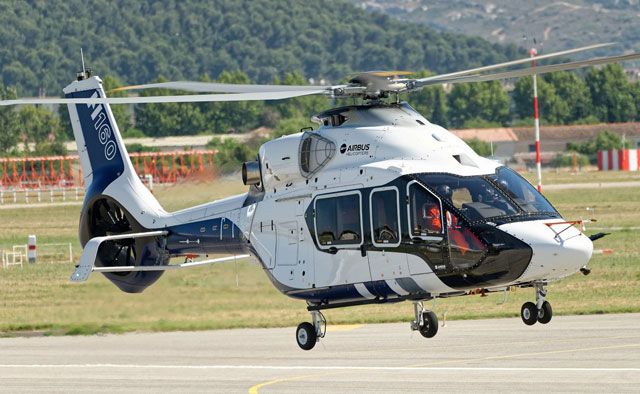
Airbus
Airbus Helicopters finally unveils the first of the H generation
Airbus Helicopters has been promising the world a new medium-weight, twin-engined rotorcraft since the days when it was still Eurocopter, but the eventual size and shape – and indeed name – remained something of a mystery. In March the manufacturer finally revealed the H160 to the world. Intended as a replacement for the A365 Dauphin and H155 and a response to the AgustaWestland AW139 – dubbed the “AW139 killer” by chief executive Guillaume Faury – the helicopter is billed the “first of the H generation” reflecting the changes at the company since it gained the Airbus branding. Key to the H160 is its relative simplicity, particularly when compared with the initial designs when it still bore the X4 designation. Gone are the highly complex cockpit display and fly-by-wire controls to be replaced by more conventional systems. Gone too is the engine choice, with Airbus Helicopters ditching the Pratt & Whitney Canada PW210 in a quest for more power, leaving the 1,100-1,300shp (820-969kW) Turbomeca Arrano as the sole powerplant. However, the new rotorcraft still features a host of advanced features including a shrouded tail rotor canted at 12°, a biplane rear stabiliser, and curved Blue Edge rotor blades. Thanks to its adoption of a new way of designing and building helicopters – during which dynamic and electrical systems are matured before the aircraft takes to the skies – the H160 has moved forward quickly. First flight came in June, shortly before the Paris air show, and a second prototype was due to join the test fleet by year-end. More details on the precise specification of the H160 should emerge as testing progresses in 2016. The manufacturer will also open its order book next year, which should be the clearest indicator of the H160’s popularity.

Bombardier
Bombardier: not all good news
Bombardier had a few bits of good news in 2015. The CSeries was on track to be certificated by the end of the year as this article went to press. Flight tests had confirmed the CS100 met or beat promised performance goals. And the company is now led by a strong cadre of well-known and respected executives plucked from some of the industry’s biggest manufacturers, lessors and airlines.
But there was also bad news for the Montreal-based manufacturer in 2015. Okay, lots of bad news. In February, Bombardier chairman Laurent Beaudoin was forced to retire as the company reported a $1.4 billion write-down on the “paused” Learjet 85 programme. In July, Bombardier announced a two-year delay for the Global 7000, to redesign the wing. Bombardier added another $1.2 billion charge on the Learjet 85 and finally cancelled it. More ominously, the company announced a $3.2 billion write-down on the CSeries. It’s been 15 months since a customer signed a new firm order for a CSeries aircraft.
The Quebec government has stepped in help salvage the company’s finances, pledging to invest $1 billion in a new CSeries joint venture in 2016. Canada’s federal government is also in discussions with Bombardier to inject more cash.
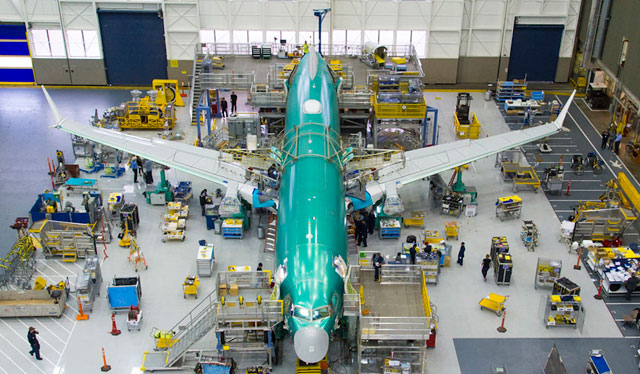
Boeing
Boeing cools off orders pace
Boeing set an internal orders record a year ago, but it couldn’t maintain the pace in 2015.
The company’s net order tally in 2014 rose to 1,432 aircraft overall, swelled by demand for new models such as the 737 Max, 777X and 787-10.
By the end of November, however, Boeing’s year-to-date net orders in 2015 stood at just 568. Boeing chief salesman John Wojick pledged at the Dubai air show in mid-November to sign as many orders by the end of the year as the company would deliver: 755-765 aircraft.

Embraer
Embraer completes its Legacy
Embraer’s ambitious 10-year business aircraft development effort reached its climax in August when the seventh and final programme, the Legacy 450, secured US certification. The first aircraft is being readied for delivery to its US customer this month.
The Brazilian airframer launched its Executive Jets division in May 2005 with a quest to become a powerhouse in the business aviation market.
It hasn’t disappointed, with a sector-busting range that includes the Phenom 100 and 300 as its entry level offerings, the Legacy 500 and 600 in the middle, the large-cabin Legacy 650 and the Lineage 1000E VIP airliner at the helm. To date nearly 1,000 business jets have been delivered worldwide.
The Legacy 450 fills a critical gap that bridges the size normally found in the super-light category and offers performance usually associated with midsize jets. However, in the face of growing competition from Cessna’s new Citation Latitude, which was certificated around the same time, Embraer announced in November a 10% increase in the twinjet’s range to 2,900nm (5,370 km). The extra mileage gives the Legacy 450 a 400nm gain on the Latitude and will enable the aircraft to connect to many more city pairs non-stop, such as San Francisco to Hawaii and Abu Dhabi to Cannes. It is slated to enter service as the baseline model in the third quarter of 2016.
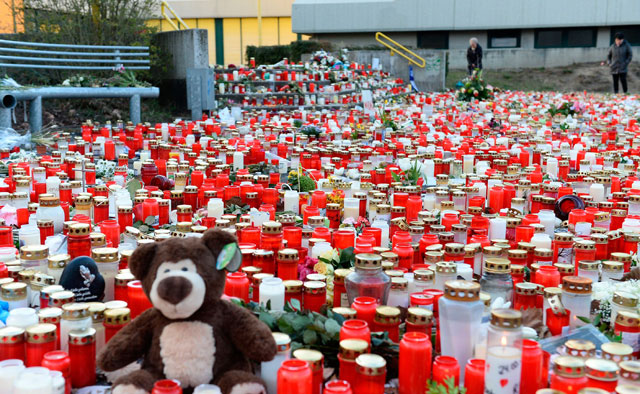
Rex Shutterstock
Mentally ill pilot kills 150
When a Germanwings A320 en route from Barcelona to Dusseldorf crashed in the French Alps on 24 March, killing all 150 on board, the rarity of catastrophic problems in the cruise phase of flight immediately rang alarm bells that this had been no ordinary disaster.
Sadly, early concerns proved justified when the recovered cockpit voice recorder showed the pilot to have been locked out of the cockpit as the aircraft began its descent from 38,000ft, apparently at the deliberate control of co-pilot Andreas Lubitz, who had not responded to numerous radio calls from air traffic control.
Realisation the aircraft had been deliberately crashed prompted calls for two crew at all times in the cockpit and reviews of post-9/11 cockpit door locking routines. But there may be no complete protection when mental illness is a factor.
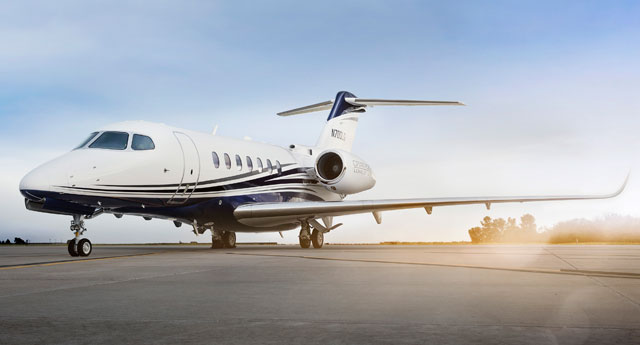
Cessna
At Textron, it’s bigger, bolder and fresher
Textron Aviation revealed a bold new direction with the unveiling of two Cessna Citation business jets – one new and one re-imagined – that will sit at the top of the venerable airframer’s 18-strong family of piston, turboprop and jet aircraft.
The new designs are positioned in two of the most crowded yet lucrative sectors of the business aviation market, where Textron is aggressively seeking to expand.
The all-new Hemisphere is the Cessna’s latest flagship. It will compete in the large-cabin niche which has proved a consistently strong performer throughout the economic downturn.
The Hemisphere is Cessna’s largest and longest legged business jet to date with a range of 4,500nm (8,325km) and a 2.59m (102in)-diameter fuselage cross-section. It also has several advanced technologies for Cessna, including an at least partially fly-by-wire flight control system.
When it enters service early in the next decade, the $30-35 million Hemisphere will be a shot across the bows of competitors Bombardier, Dassault and Embraer, whose large-cabin offerings – the Challenger 650, Falcon 2000LXS and Legacy 650 – are based on much older and narrower platforms.
The Hemisphere occupies the market segment originally envisioned for the Longitude. This clean-sheet aircraft had its first outing in 2012, but after a strategy re-think following Cessna’s takeover by Textron, the twin has undergone a revamp. The recent model – unveiled at November’s business aviation industry showcase, NBAA – is now positioned in the super-midsize sector between the midsize, high-speed Citation X+ and the Hemisphere.
Textron has reduced the original design’s top range limit by 600nm to 3,400nm and replaced its Snecma Silvercrest engines with Honeywell’s HTF7700L.
First flight is on track for mid-2016 and deliveries should begin in the second half of 2017.
Cessna also quietly revealed a new single-engined turboprop in July, but enthusiasts will have to wait until mid-2016 to see what shape and form this fresh design will take.
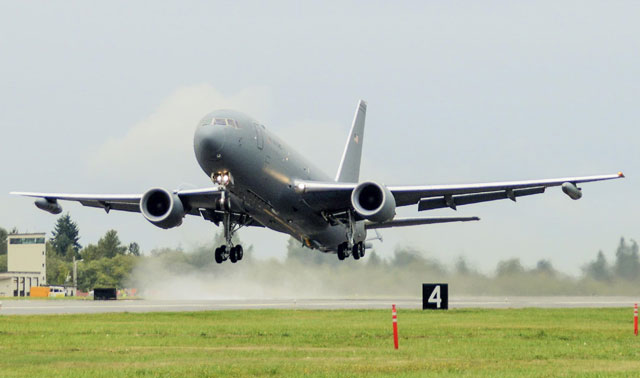
USAF
Boeing flies the KC-46A
Boeing’s overthrow of Northrop and EADS to secure the US Air Force’s next-generation tanker programme has threatened to become a poisoned chalice after a string of avoidable and expensive setbacks.
But the company’s first KC-46A Pegasus took flight on September 25, lifting the tanker team’s spirits after an almost nine month delay and nearly $1.5 billion in Boeing-absorbed cost overruns.
Air force officials now say Boeing is clocking up flight hours and burning through test points faster than expected, and the initial 767-2C test aircraft, that first flew in December 2014, is progressing steadily through US Federal Aviation Administration certification.
Those same officials, though, caution observers to expect new discoveries as the test programme continues. In spite of the setbacks, Boeing has pledged to deliver 18 operational tankers by August 2017.
Is Boeing being blindly optimistic or can it really make up for that much lost time? That depends on how the KC-46A performs in 2016 with a “milestone C” low-rate production review expected in the second quarter.
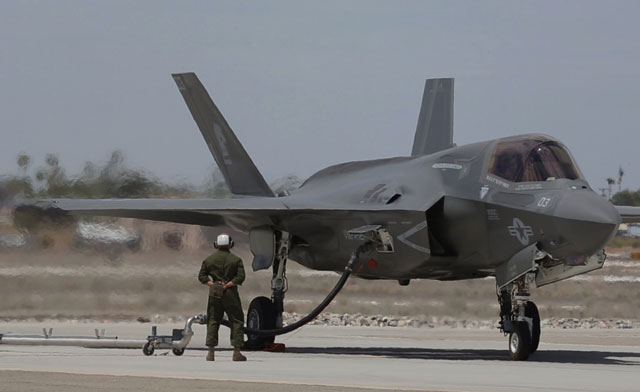
Marine Corps
F-35B ready for action with the US Marines
America’s most expensive defence acquisition zipped past a major milestone on 31 July with the US Marine Corps establishing its first combat-coded F-35B squadron.
The marines say their stealthy Lockheed Martin-built combat jet is ready for prime time, after more than 14 years of development and billions of dollars spent.
The multinational F-35 procurement has been beset by engineering faults, delays, cost overruns, and a worrying engine failure in 2014, but advocates say the initial operational capability (IOC) declaration marks a turning point with all eyes now on preparations for the first air force F-35A and navy F-35C squadrons. But with approximately 25% of the test phase remaining and production scaling up, others caution the F-35 isn’t out of the woods yet and programme participants face huge bills to bring already-fielded aircraft up to the final Block 3F standard.
The “Green Knights” marine fighter-attack squadron will rotate to Japan in 2017, but the aircraft could be called into battle sooner. Lockheed and the F-35 joint programme office will be hoping the aircraft proves as lethal as it is expensive.
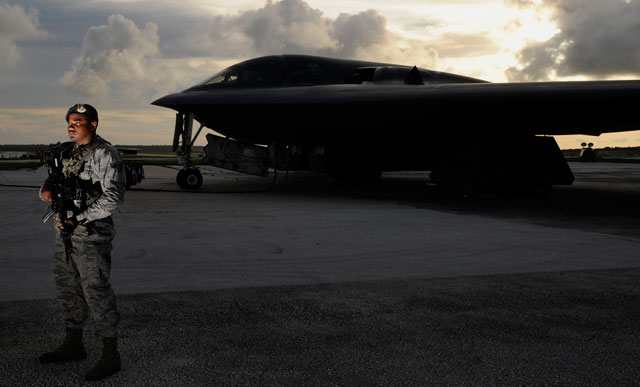
USAF
Northrop wins bomber contest
Speculation over who would build America’s next stealth bomber ended on 27 October when USAF secretary Deborah Lee James announced Northrop Grumman as winner of the Long-Range Strike Bomber (LRS-B) competition at the expense of Boeing and Lockheed Martin.
As expected, the losing side’s lawyers quickly sprang into action to find fault with the air force’s source selection process and the Northrop win is now the subject of a US Government Accountability Office review, with a decision due by 16 February 2016.
The contract was a strategic victory for B-2 creator Northrop, which had been running multimillion dollar ad campaigns touting its bomber experience leading up to the decision – even securing a 2015 Super Bowl halftime spot.
If the selection holds up to scrutiny, LRS-B becomes Northrop’s biggest project, dwarfing its next biggest aircraft programmes – the E-2D Advanced Hawkeye and MQ-4C Triton.
The air force wants to keep the classified bomber hidden from potential rivals Russia and China as long as possible, but how long can you keep an $80 billion programme secret from American taxpayers?

Airbus
Airbus starts and ends with milestone
For Airbus, 2015 was a year nicely bookended by new model milestones. On 15 January, the A350 widebody entered service, when Qatar Airways flew its -900 from Doha to Frankfurt, having taken delivery of the Rolls-Royce Trent XWB-powered aircraft (A7-ALA), one of 80 A350s the carrier then had on order, on 22 December 2014.
And, the re-engined A320neo won European and US type certification on 24 November. Clearance to commence deliveries of the Pratt & Whitney PW1100G version came a week shy of the fifth anniversary of the A320neo’s launch, in December 2010. Early headway had led Airbus to pull its first delivery target back from the original 2016 to October 2015, but engine testing snags cost it that deadline.

Mitsubishi
MRJ flies
On 11 November Mitsubishi Aircraft finally got its MRJ regional jet off the ground. In a 90min sortie from Nagoya International airport, the aircraft performed very well, according to test pilots. During the much-anticipated flight, the crew looked at the basic characteristics and functionality of the aircraft in ascent, descent and turning.
The first flight had been scheduled for late October, but at the last moment was pushed back so that the jet’s rudder pedals could be changed. Prior to this, the ambitious programme had suffered a number of delays. Mitsubishi plans to have five aircraft in its test fleet. A large part of the testing work will be undertaken in the USA, starting from the second quarter of 2016.
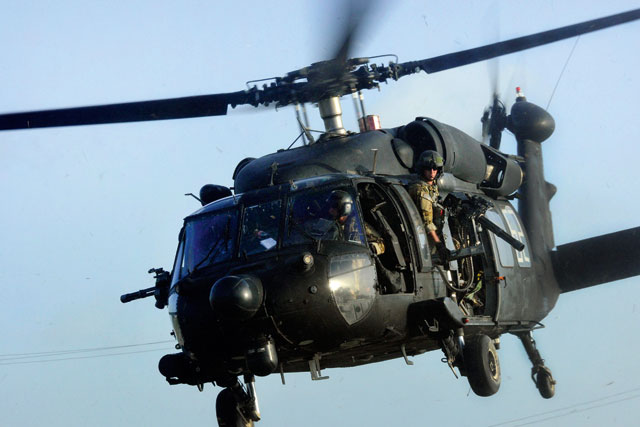
US Army
Lockheed Martin takes over Sikorsky
Increasingly the odd-man-out at United Technologies (UTC), helicopter maker Sikorsky started the year in a state of uncertainty. Its parent company had already indicated it was exploring the options for the maker of the UH-60 Black Hawk, but had not committed to a sale. As the year went on, however, the signs that UTC was looking to divest the company became more obvious, culminating with the announcement at the Paris air show in June that the business unit would be sold. There followed a relatively short bidding process before Lockheed Martin emerged victorious around a month later. It is paying $9 billion for Sikorsky in a deal which represents a massive diversification of Lockheed’s military aircraft portfolio, otherwise dominated by the $400 billion F-35 Joint Strike Fighter programme. It gains a 65% share of the US military rotorcraft business, mostly through the Black Hawk and its derivatives, plus the CH-53K King Stallion for the USMC. More crucially, at least for the end-user, it consolidates several major US defence programmes under one roof, with Lockheed running 100% of the USAF’s HH-60W combat rescue helicopter project and participating in both teams bidding for the army’s joint multirole technology demonstrator (JMR-TD) effort. Questions remain, however, over Lockheed Martin’s long-term strategy for the civil helicopter range.

BFAnyc.com/Rex Shutterstock
SpaceX failure dents Musk
Launching rockets is no mean feat, so while any given failure is obviously a surprise, it came as no surprise that SpaceX lost one. Or, finally lost one, when a Falcon 9 hefting an uncrewed Dragon cargo capsule to the International Space Station came to grief over the Atlantic some 139s after lift-off from Cape Canaveral on 29 June.
Structural failure of a strut supporting a second-stage helium tank was deemed the culprit – the first, boost stage performed to order and the rocket disassembled rapidly rather than exploding. After the incident, SpaceX boss Elon Musk promised to scour the other 18 missions-worth of F9 flight data for any “near misses”, and insisted the disaster wouldn’t derail the timetable for getting the crewed version of Dragon flying for NASA in 2017 – a significant touchstone of American pride, given that since the 2011 retirement of the Space Shuttle fleet, the only ride to space for American astronauts has been on Russian Soyuz rockets, from Kazakhstan.
Apart from leaving space station astronauts having to go easy on supplies (two other recent ISS resupply missions had ended badly) and delaying missions scheduled for later in 2015, the 29 June failure took some shine off the SpaceX star. Musk – a Silicon Valley billionaire who is also the brains and money-raising maestro behind Tesla electric cars, partner of Hollywood star Talulah Riley and an inspiration for the Tony Stark character in Marvel Comics’ Iron Man films – has not really revolutionised rocket technology, but he has revolutionised rocket pricing. By combining private sector cost discipline with the industrial and engineering advantages of a clean-sheet programme, he forced his way into a market dominated by established rivals United Launch Alliance and Arianespace, and sent them back to the drawing board.
Musk had created an aura of invincibility, seemingly able to innovate at will. Rivals would be unwise to ease off plans for next-generation launch systems, but with a Falcon 9 failure and three failed attempts to recover a first stage for recycling now on his ledger, he is at least now bound by the same laws of chance as everybody else. The engineers have always known that, of course, but customers, politicians and a space-loving American public are better served by rational expectations than breathless excitement.

Comac
C919 rolls out
Chinese national pride was boosted on 4 November when Comac rolled out its long awaited C919, a narrowbody jet aimed squarely at the market served by Boeing’s 737 and Airbus’s A320. Despite being China’s first effort at producing a truly competitive airliner, the aircraft already has more than 500 orders, mainly from Chinese airlines and leasing companies.
Flightglobal, which visited the unfinished fuselage in Shanghai in April, was impressed by the apparent speed with which Comac was able to install the engines, landing gear, and other key systems. That said, journalists were not allowed to peek inside the finished aircraft at the early November event. Comac has a long way to go before it rivals the likes of Boeing and Airbus, but the C919’s roll out is a clear sign that the Boeing/Airbus duopoly cannot last forever.
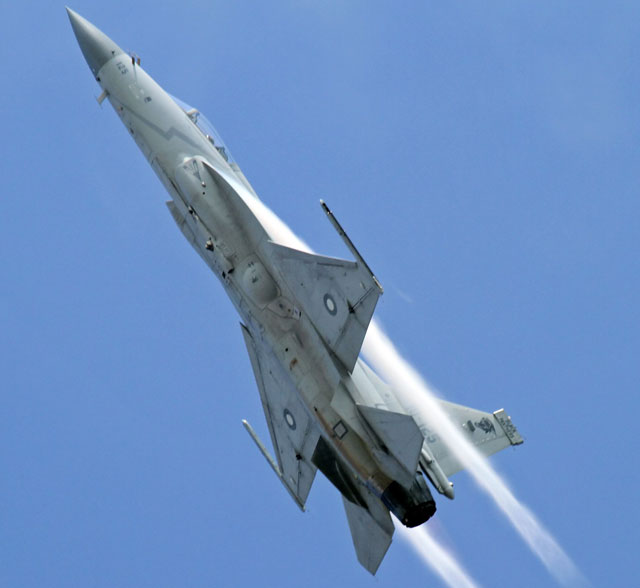
imaginechina/REX Shutterstock
JF-17 wins first export order
A stock question for aviation journalists in recent years has been to ask officials from the Pakistan Air Force and China defence export agency CATIC, when the JF-17 fighter, jointly produced by Islamabad and Beijing, will win its first export order. At the Paris Air Show in June, Flight Daily News scored a major scoop when a key programme representative from Pakistan revealed a first customer has signed the contract.
Months later, at the Dubai Air show, Pakistani officials again confirmed the deal. Unfortunately, they declined to reveal key items of interest such as the mystery customer’s identity, the number of aircraft involved, and delivery dates. Nonetheless, the JF-17’s first international sale marks a key milestone for a fighter billed as a low-cost, high-capability jet for developing world air forces.

Blue Origin
Rocket recycling, step 1
Another Silicon Valley mogul turned rocketman, Jeff Bezos of Amazon fame, notched up a notable success in November when his space company, Blue Origin, successfully launched its BE-3 rocket to suborbital space and recovered the notionally reusable vehicle in a rocket-powered vertical landing, from its West Texas launch facility.
The second BE-3 flight, to 100.5km, followed a maiden sortie which failed to save the booster. Both flights saw the New Shepard payload capsule safely returned by parachute. The plan is to offer short flights for fare-paying passengers or scientific payloads, prospects on which Blue has yet to put a date.
Bezos’s ambitions go far beyond suborbital spaceflight. A bigger rocket engine, BE-4, is being developed with partner United Launch Alliance as a stage in its modular Vulcan system, which is being developed to replace the Boeing-Lockheed Martin joint venture’s Atlas V and Delta IV rockets. As the company puts it: “We are building Blue Origin to seed an enduring human presence in space; to help us move beyond this blue planet that is the origin of all we know. We are pursuing this vision patiently, step-by-step.”
Reusability is often cited as a critical enabler, from a cost perspective, of regular travel to deep space. Indeed, SpaceX, ULA and Arianespace are all working on different approaches to recovering for reuse main stage engines or even the entire stage. But for many missions it will never pay, because recovery involves adding mass to make a rocket robust enough to survive multiple flights and carrying fuel to slow and steer the craft to the ground, sapping precious payload performance.
BE-3s recovery is noteworthy, but not necessarily an indicator that the launch industry is on the cusp of achieving the economic reusability that eluded the Space Shuttle programme. Physics dictates that an up-and-back suborbital flight to 100km reaches about 950m/s, a little less than Mach 3. But going orbital, say at 200km, means accelerating to 7,800m/s – which needs nearly 70 times as much energy. The engineering challenge and cost of recovering such a vehicle is orders of magnitude greater.
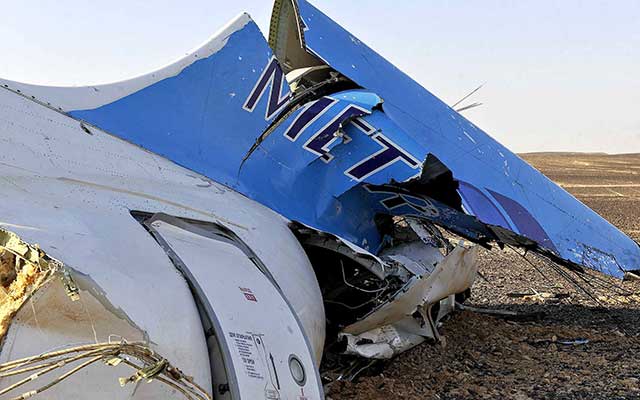
Xinhua News Agency/REX Shutterstock
MetroJet A321 downed by bomb
A fresh reminder, if any were needed, of aviation’s vulnerability to terrorism was served up on 31 October when an Airbus A321 operated by Russia’s MetroJet crashed in the Sinai after takeoff from Egypt’s Sharm-el-Sheikh international airport. Russian investigators soon determined that the aircraft was brought down by a bomb. Russian investigators, finding traces of explosives in baggage and debris, concluded that a blast equivalent to about 1kg of TNT destroyed the aircraft, killing all 224 occupants.
Islamic extremist group ISIS was squarely implicated.

European Space Agency
Space Station star power
One beneficiary, if it’s alright to put it quite that way, of a string of failed resupply missions to the ISS was Italy’s Samantha Cristoforetti. Due to plummet home in mid-May after six months on board, the failure of a late-April uncrewed Russian supply mission prompted caution and the return date was pushed back a month – keeping her in space for just shy of 200 days, the record for a woman and for any European Space Agency astronaut.
The Italian air force captain made good use of her time in orbit: two space walks and a hugely active media presence, with video reports on everything from special meals prepared for the mission to how space station crew wash their hair and flush the toilet. A real star – evidence her Twitter following of 430,000.
Station crews to come will always thank Cristoforetti and the Italian space agency for arguably the most important improvement to ISS amenities in the 15-year history of the orbiting laboratory. Before her departure, the astronaut was able to unpack and commission into service a microwave oven-sized espresso machine built specially by Lavazza in Italy, with space food specialists Argotec. Given the high pressures and temperatures required, making an espresso is no mean feat in microgravity; anyone who has tasted astronauts’ coffee-in-a-tube will appreciate the realisation of what, surely, will prove to be one of the enabling technologies for any long-duration mission to, say, Mars.

AirTeamImages
Transaero: down and out
Economic woes in Russia didn’t spare the aviation sector. The biggest casualty was Transaero – once the poster child for an airline industry that had shed its grim Soviet clothes for modern (read, “Western”) jets and smiling cabin crew but, by the latter half of 2015, was teetering on the edge of bankruptcy.
In 2014, the airline made a net loss of Rb19.3 billion (around $290 million at summer 2015 exchange rates), and in the first seven months of this year it had paid close to a sixth of revenue to creditor banks.
Collapse came in October, when the carrier was grounded by Russian regulator Rosaviatsia which had been concerned about its "unsatisfactory financial and economic condition" and arrears to Russian air navigation providers of around Rb1 billion ($15 million).
Flag carrier Aeroflot declined a chance to take a stake in Transaero, but picked up some of the pieces after its collapse – taking on many of Transaero’s routes and aircraft.

NASA
US rocketry gets a boost
Orbital Sciences and ATK planned to have merged by the end of 2014, but the spectacular launch pad explosion (pictured) of a space station-bound Orbital Antares rocket and Orbital Cygnus resupply ship on 28 October pushed the completion into January this year.
No matter; the tie-up – a true marriage of equals – created a company that can fairly describe itself as one of “complementary technologies, products and know-how, and highly compatible cultures”. ATK makes solid rocket motors, satellite systems and composite structures, while in addition to Antares and Cygnus, Orbital makes satellites and small launch systems – including missile interceptors and the Pegasus air-launched rocket.
What the merger really underscores, though, is that American rocketry is entering a new golden age. Owing to the private sector shake-up kicked off by SpaceX and its Falcon 9 launcher and to the sanctions tit-for-tat over Ukraine and Crimea, time has been called on the days of US rockets being built around Russian engines. Gone soon will be the Soviet-era NK-33s at the heart of Antares and RD-180s that power United Launch Alliance’s Atlas V).
The US Air Force, heavily reliant on Atlas V for national security launches, may go so far as to call for an all-new, all-American launch system. Meanwhile, United Launch Alliance has gone ahead and kicked off development of a modular system, called Vulcan, that will eventually replace Atlas V and Delta IV.
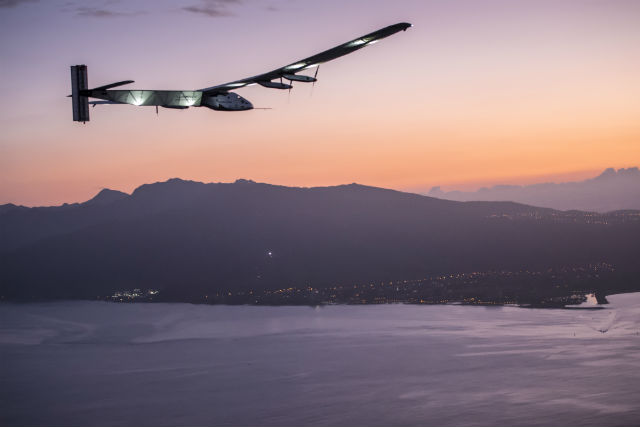
Solar Impulse
Epic Impulse shows power of technology
In a year ending with a landmark inter-governmental climate change conference in Paris, make special note of Solar Impulse. After 12 years of preparations, the Switzerland-based operation got off the ground in Abu Dhabi in March to kick off a 12-stage, 35,000km round-the-world flight – on nothing but solar power.
Solar Impulse is a remarkable achievement from an aviation perspective: the single-seat second-iteration aircraft has a wingspan of 72m (a Boeing 747-8I comes in at “just” 68.5m), but weighs a mere 2,300kg (5,071lb) – about the mass of a car – including its 633kg load of lithium batteries and the 17,248 solar cells on its horizontal surfaces.
Co-founders André Borschberg and Bertrand Piccard – accomplished aviators – repeatedly stress the project is not about aviation: it is about energy. The pair hope flying huge distances with no more power than is generated by a small motor scooter will demonstrate the world’s formidable energy challenges can be met by existing technologies. As Piccard puts it: “With our attempt to complete the first solar-powered round-the-world flight, we want to demonstrate clean tech and renewable energy can achieve the impossible.”
En route, Solar Impulse 2 smashed all solar-powered crewed flight endurance records on an epic five-day/five-night leg from Nagoya to Hawaii. Alas, the effort overcooked its batteries and the machine is grounded for repairs – and a redesigned battery system – until Spring 2016.
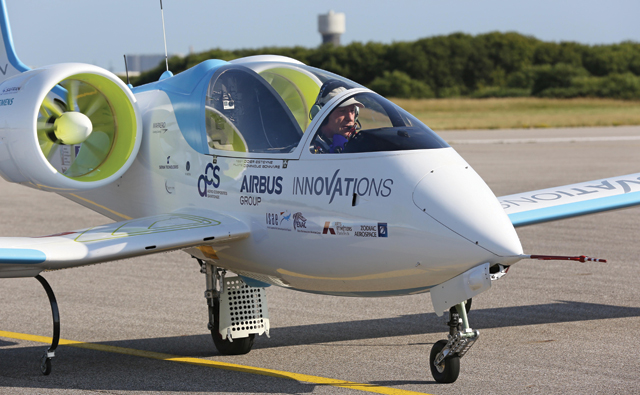
Airbus
Electrics show the future
In July, Airbus claimed an interesting first, for a battery-powered crossing of the English Channel, when its e-Fan demonstrator with Didier Esteyne (pictured) at the controls hopped from Lydd, in England, to Calais in 37min. The flight – trailed as following in the slipstream of Bleriot – made headlines as far afield as the USA and Australia, but was far more than a barnstorming publicity stunt; Airbus is driving toward commercial production.
Paris air show visitors saw a mock-up of the production version; a stylish two-seat trainer that should make its first flight in late 2016 or early 2017. And, a four-seater with a kerosene engine “range extender” to keep the batteries topped up will follow.
Ultimately, Airbus has its sights on a 70- to 80-seat regional transport with hybrid electric power. Such a machine, says Airbus, is feasible – and could beat the noise restrictions that currently limit operations at secondary airports to daytime take-offs and landings.
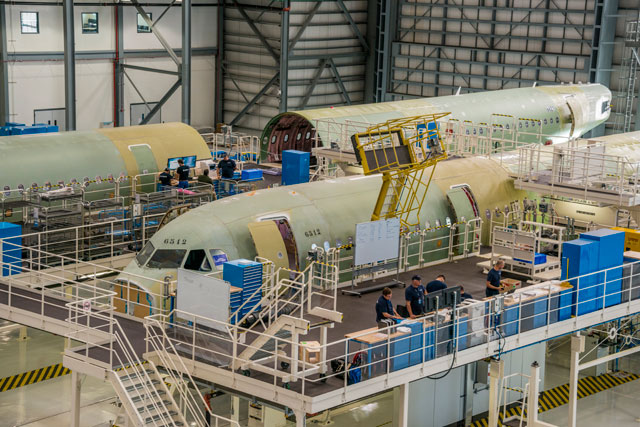
Airbus
Aerospace gets a geography lesson
In 2015, Airbus started building A320s in Alabama and Boeing announced plans to deliver 737s from an unspecified location in China.
The present narrowbody order boom has produced a lot of previously unthinkable moves, such as a global supply chain ramping up to build as many as 120 A320s and 737s combined each month by the end of the decade.
But none are likely to be more enduring than the evolving geography of narrowbody final assembly and delivery centres.
To be sure, most aspects of the Airbus and Boeing production systems won’t change. Airbus will still concentrate major component assembly work in Europe and distribute final assembly to two centres in Europe, one in China and the newly-opened final assembly line in Mobile, Alabama. Boeing, meanwhile, will still be oriented in the opposite direction, with major component work distributed over a vast supply chain and final assembly concentrated the Puget Sound area and, in the singular case of the 787 programme, also North Charleston, South Carolina.
But there has been a change of direction in the past year. Never before has Boeing delivered aircraft from outside the USA and never before has Airbus assembled and delivered commercial airliners from within it.
As that changes, both manufacturers will be creating what they need the most: extra capacity. Opening a fourth production line in the USA is vital to Airbus’s plans to continue expanding A320 production rates. Likewise, Boeing needs room to grow, and opening a 737 delivery centre in China is a sensible first step in that direction.
Both manufacturers are also following the market’s lead. According to their own forecasts, the USA will remain the largest air transport market for most of the next 20 years. China represents the fastest growing market over that period, eventually over-taking the USA as the world’s largest consumer of new airliners.
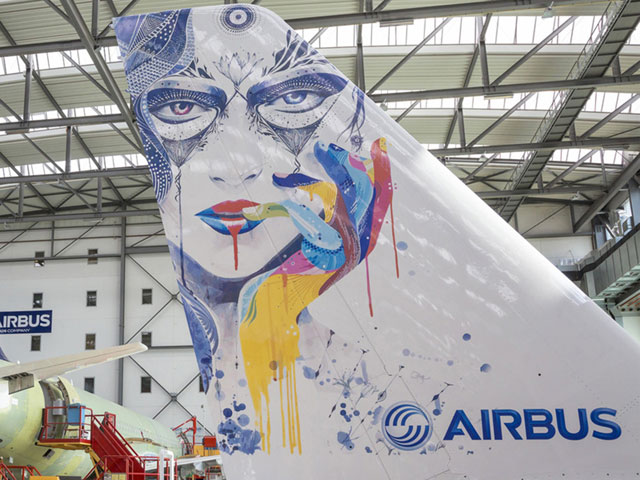
Airbus
Rate expectations
Airbus waited until the last days of October before confirming what many suspected: that it intends to raise output of its best-selling narrowbody to previously unheralded levels. From mid-2019, the airframer will produce 60 A320neo-family jets each month across its four final assembly lines in Toulouse, Hamburg, Tianjin and Mobile.
It says analysis of its order book suggests the backlog for the re-engined narrowbody – presently at over 4,400 and rising – is sufficiently robust to support the increase. Discussions with key suppliers – particularly engine manufacturers CFM International and Pratt & Whitney – have given Airbus confidence the supply chain can cope with unprecedented levels of output.
The manufacturer had already committed to taking output to 50 A320-family jets per month from 2017, with Boeing taking production of its competing 737 to 52 per month. Airbus’s move, of course, puts pressure on the Seattle airframer to match the increase. The opening of a third production line in Renton, Washington creates capacity at the final assembly stage for Boeing to build as many as 63 737s. Spirit AeroSystems, which supplies the narrowbody’s fuselage, has made similar capacity adjustments at its manufacturing site in Wichita, Kansas. Boeing, too, has made changes to its Renton wing assembly line to support the higher rate. But now it is a matter of persuading the supply chain, especially engine manufacturer CFM, which has exclusivity on both the current-generation 737 and the re-engined Max, to ramp up production as well. However, all of that has to be considered in the context of rate rises on other programmes: Boeing intends to push the 787 to Rate 12 in 2016 and Rate 14 by the end of the decade, as Airbus struggles to meet ramp-up targets on the A350.
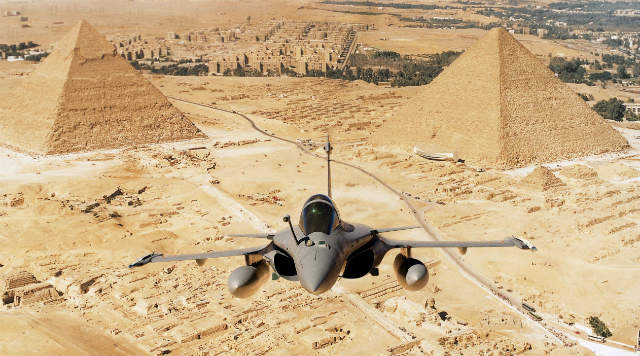
Dassault
Rafale breaks out
Egypt ordered 24 Dassault Rafale fighters in February and took delivery of the first three in July. Qatar signed a firm order for 24 Rafales in May.
Both orders break a decade-long export barrier for the French air force’s premier multi-role fighter, relieving the defence ministry in Paris of the full financial burden for supporting the type.
Until 2015, the Dassault and French government sales effort had yielded a string of at least six failed bids, including Brazil, Kuwait, Libya, Singapore, South Korea and Switzerland. The export deals in 2015 also emerged rapidly compared to years-long negotiating marathons in other countries.
India selected the Rafale for a 126-aircraft deal in 2009, but efforts to consummate the order have stalled. It appeared earlier this year that both sides were close to resolving a dispute over Dassault’s liability for Indian-made Rafales. But plans to close the deal by July never came to fruition and the talks continue, for 36 aircraft.
A similar delay has unfolded in the United Arab Emirates, which also selected the Rafale in 2009. But negotiations to complete that order for up to 60 aircraft also have stalled, with no update offered from either side during the Dubai air show in November.
However, the Rafale continues to look for more export deals. As 2015 came to a close, the sales campaign stretched from Malaysia to Finland to Canada, where the Rafale is competing against a familiar crop of rivals for major fleet deals.
Source: Flight International



















